US jobs report preview: Will it help or hinder rate cut hopes?

Table of Content
Markets head into Friday’s US jobs report with optimism over how 2024 might play out, with the recent disinflation seen across the globe helping to bring anticipation for a potentially dramatic monetary policy reversal. Whether the Federal Reserve will be desperate to drive down rates to the degree that markets expect remains to be seen. Part of that story will come down to the health of US economy, with signs of weakening growth or employment picture likely to hasten calls for a swift normalisation of interest rates at the Federal Reserve. Let’s look at some of the key elements from the forthcoming US jobs report, highlighting what recent trends have shown us and what to look out for in the future.
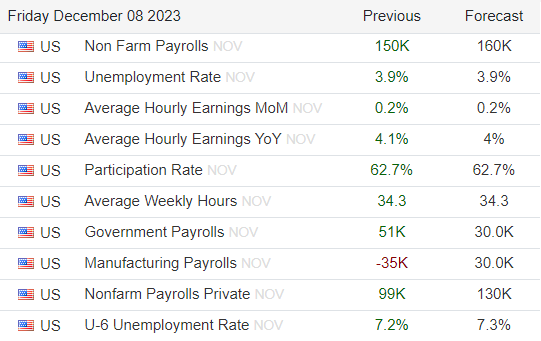
US non-farm payrolls
Last month saw a surprise slump in US payrolls, with the 150K figure representing second lowest reading this year. As we can see below, last month saw particular weakness in the manufacturing sector, which dragged the nonfarm payrolls figure lower as the sector struggled to deal with union led strikes in the month of October. That provides the basis for a potential rebound in November. However, such a rebound may be somewhat underwhelming given market expectations of a figure around the 160-180K mark.
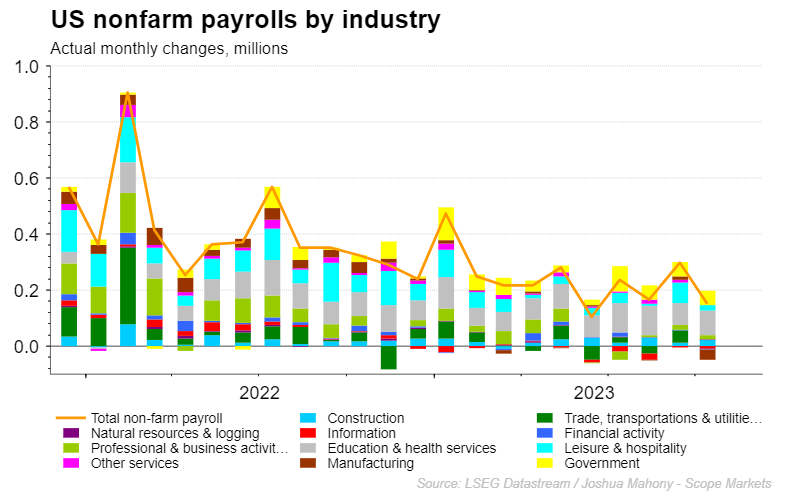
It should be noted that there are some calls for a potential rebound up through the 200K mark, with the top three ranked contributors on Eikon all calling for a figure well in excess of that threshold. Should we see that come to fruition, it could help drive dollar strength and wider risk-off sentiment as expectations over the timing and size of the Fed’s 2024 rate cuts are curtailed.
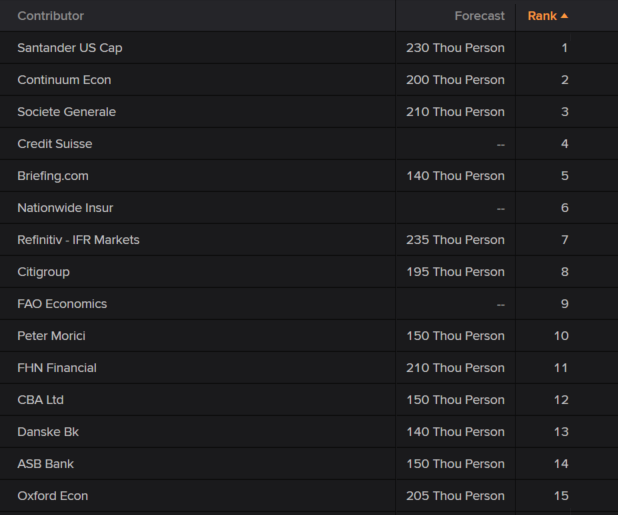
Unemployment
The headline unemployment rate will be key for markets to gauge whether we are seeing a notable deterioration in the US jobs market. As things stand, we are yet to see any significant surge in the headline unemployment rate which stands at a mere 3.9%. This is compatible with average unemployment in the years prior to COVID. The chart below tells us that we are yet to see a surge in newly unemployed, which would be the first sign that the jobs market is on the turn. However, it is worth looking at the recent Conference Board consumer confidence survey, which highlights the perception of job availability as shifting towards roles becoming more difficult and less plentiful. Nonetheless we are yet to see this uptick result in any significant rise in the unemployment rate, meaning that the Federal Reserve can rest easy that their recent monetary tightening policies are yet to have any notable negative consequences for the jobs market. With the latest unemployment rate standing at 3.9% a move up to 4% or above may grab the headlines, albeit briefly. However, markets are expecting another steady figure of 3.9% on Friday.
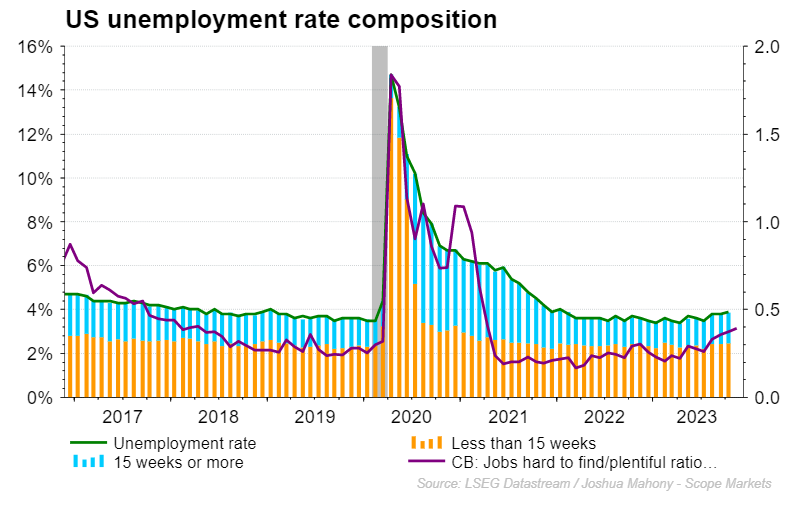
Average hourly earnings
The average hourly earnings figure has become increasingly important over recent years with wages a key factor for inflation going forward. The ability to drive down inflation expectations will be key in driving down wages and allowing businesses to stabilise prices. Should employees expect elevated inflation going forward they will continue to push for higher wages to maintain their quality of living. With the average hourly earnings figure serving as a key proxy for inflation, further declines would likely embolden calls for a swift normalisation of monetary policy next year. By stripping out some of the more volatile factors in the headline inflation rate we can see a close relationship between average hourly earnings and the core CPI figure. Markets are expecting a tick lower from 4.1% to 4% this week, with any steeper decline likely to be greeted with optimism by markets given the implications over a sharp decline in the core inflation rate.
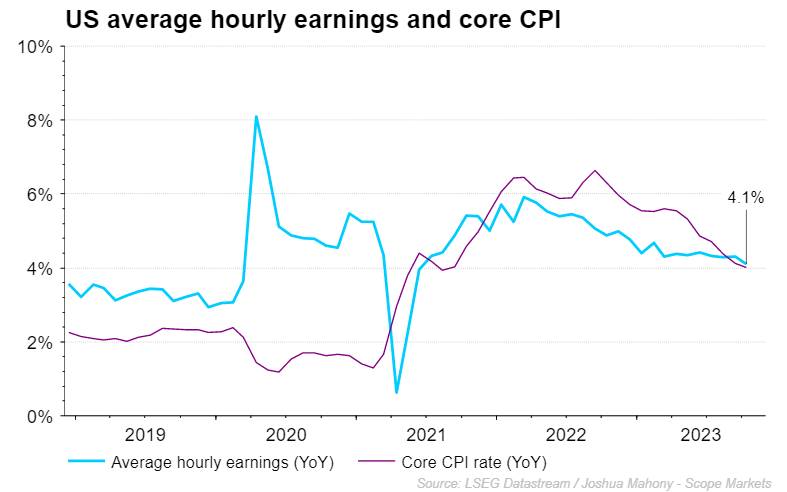
Outlook for US interest rates
Much of the volatility associated with this jobs report comes from the potential implications over rate cut expectations in the US. Markets are currently pricing in a base case scenario of a March rate cut, kicking off a busy year that sees the Fed rate rates by at least 125-basis points. That could mean we see five cuts in the final seven meetings of 2024. As we can see below, the past week has seen a particularly notable swing in expectations around interest rates over the course of next year. There will be many who believe this to be overextended, with the outlook for interest rates having to adjust to signal a less dramatic easing pathway given the relatively strong US economy. Should that come to fruition, such a move would likely come from either fed commentary, or the economic data. On this occasion, a sharp jump in payrolls or average earnings could rain in optimism over the federal reserve’s expected interest rate pathway. Conversely a weakening economy and falling wage growth could reiterate the potential for an impending year of consistent easing from the Fed.
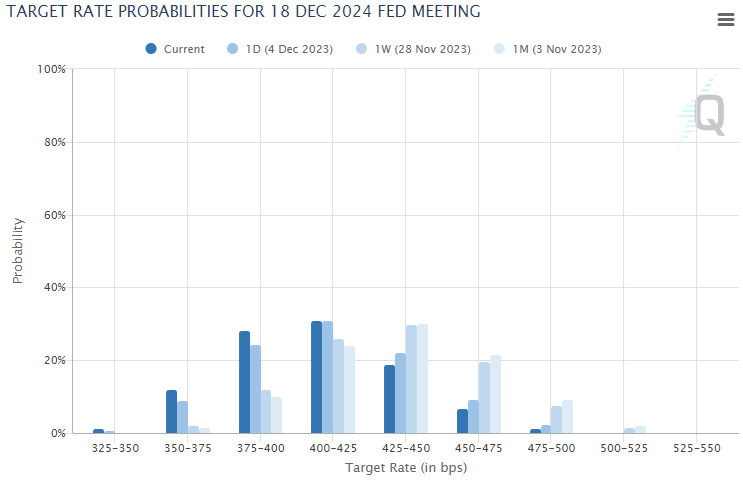
Dollar index technical analysis
The US dollar has been on the back foot over the course of the past month, with November seeing the dollar index fall from 107 to sub-103 in that period. We have seen some of this recent wider market optimism reined in of late, with the US dollar rising over the course of this week. Unfortunately for dollar bulls, the recent downturn remains intact. With price having rallied up into the 76.4 Fibonacci retracement level, there is a good chance we see the bears come back into play here. A rise up through the 104.213 swing high would negate that view signalling the potential for further upside over the near term. Looking ahead to Friday’s jobs reports the US dollar would likely gain ground on a stronger hourly earnings figure or concerning unemployment/payrolls data. However, in the absence of any particularly worrying shift for the US jobs market, the greenback looks at risk of further downside from here.
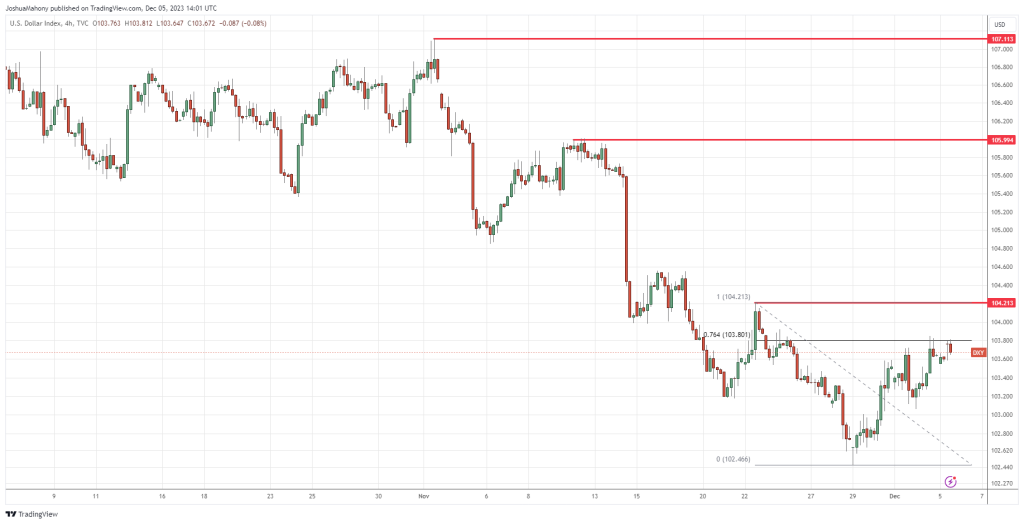
Disclaimer: This material is a marketing communication and shall not in any case be construed as an investment advice, investment recommendation or presentation of an investment strategy. The marketing communication is prepared without taking into consideration the individual investors personal circumstances, investment experience or current financial situation. Any information contained therein in regardsto past performance or future forecasts does not constitute a reliable indicator of future performance, as circumstances may change over time. Scope Markets shall not accept any responsibility for any losses of investors due to the use and the content of the abovementioned information. Please note that forex trading and trading in other leveraged products involves a significant level of risk and is not suitable for all investors.







